Chinese conversion
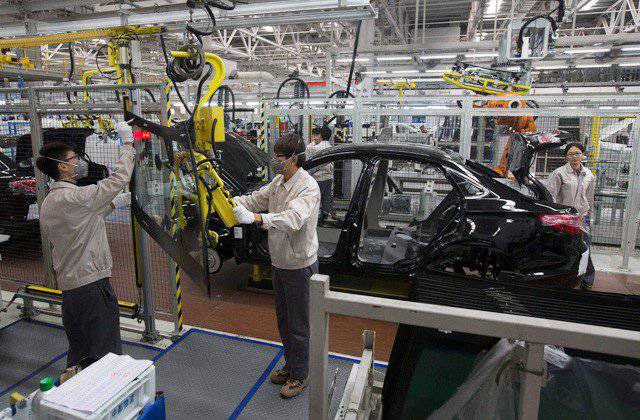
Why and how China’s military-industrial complex could become a base for the economic take-off of the country
At the time of perestroika, the word “conversion” was very popular in Russia. In the minds of the not yet disillusioned citizens of the yet disintegrated Soviet Union, this concept implied that surplus military manufactures would quickly switch to the output of peaceful products, flood the market with previously scarce goods, and provide long-awaited consumer abundance.
The conversion of the USSR failed along with perestroika. The huge industrial facilities of the highly developed Soviet military-industrial complex did not become the flagships of capitalist production. Instead of a sea of conversion goods, visible consumer abundance was provided by imports, primarily of goods made in China. But until now, few people know that mass Chinese consumer goods are, to a large extent, also a product of conversion, only Chinese. Conversion to the PRC began a little earlier than in the Gorbachev USSR, continued longer and completed much more successfully.
Agricultural Divisions of Nuclear War
At the time of the death of Mao Zedong in 1976, China was a huge and poor militarized country with the largest army in the world. Four million Chinese “bayonets” were armed with almost 15 thousand tanks and armored vehicles, over 45 thousand artillery pieces and rocket launchers, over five thousand combat aircraft.
In addition to the armed forces, there were another five million so-called cadre militias — two thousand territorial regiments armed with rifle regiments. weapons, light artillery and mortars.
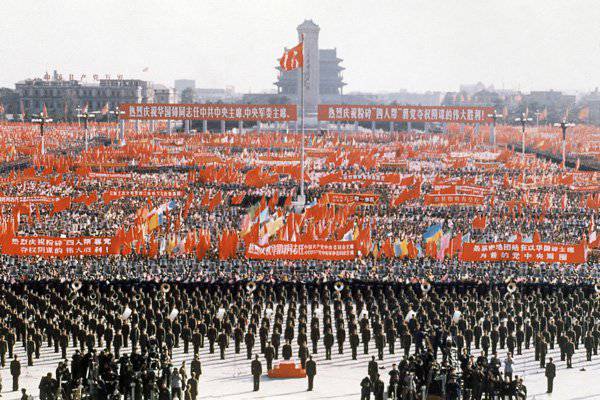
All this sea of weapons was exclusively local, Chinese-made. In 1980, China had almost 2,000 defense industry enterprises in which millions of workers produced all types of conventional weapons, as well as nuclear missiles. China at that time possessed the most developed military-industrial complex among all the countries of the Third World, second only to the USSR and NATO countries in terms of military production and military technologies.
China was a nuclear power with a well-developed rocket and space program. In 1964, the first Chinese atomic bomb exploded, in 1967, the first successful launch of a Chinese ballistic missile took place. In April, 1970 was launched in China, the first satellite - the republic became the fifth space power in the world. In 1981, China is the fifth largest in the world - after the United States, the USSR, Britain and France - launched its first nuclear submarine.
At the same time, China, before the start of the 1980, was the only country on the planet that was actively and actively preparing for a world nuclear war. Chairman Mao was convinced that such a war with the mass use of atomic weapons is inevitable and will happen very soon. And if in the USSR and the USA, even at the height of the “cold war”, only armed forces and military-industrial complex enterprises were preparing for a nuclear apocalypse, then in Maoist China, almost all of them were engaged in such preparation. Everywhere they dug air-raid shelters and underground tunnels, nearly a quarter of enterprises were evacuated to the so-called “third line of defense” to remote, mountainous areas of the country in advance. Two thirds of the state budget of China in those years was spent on preparing for war.
According to Western experts, in 1970-s, up to 65% of funds allocated in the PRC for the development of science, went to research related to military developments. Interestingly, it was planned to launch the first Chinese into space back in 1972 year. But China did not have enough money to simultaneously prepare for a manned space program and an immediate nuclear war - the PRC's economy and finances were then still weak.
With such militarization, the army and the military-industrial complex of China were inevitably involved in all spheres of life and the economy of the country. It was a kind of conversion, on the contrary, when army units and military enterprises, in addition to direct tasks, also engaged in self-sufficiency in food and civilian products. In the ranks of the People’s Liberation Army of China (PLA), there were several so-called production and construction corps and agricultural divisions. In addition to military training, farmers of agricultural farms engaged in the construction of canals, planting rice and growing pigs on an industrial scale.
Soldiers of "special export areas"
The situation began to change radically at the start of the 1980s, when Deng Xiaoping, who had become firmly in power, began his transformations. And although his economic reforms are widely known, few people know that the first step towards them was the abandonment of preparation for an immediate atomic war. Experienced Dan sensibly reasoned that neither the United States nor the Soviet Union in reality wanted a “hot” world conflict, especially a nuclear one, and the presence of their own nuclear bomb gave China sufficient security guarantees allowing them to abandon total militarization.
According to Xiaoping, for the first time in the newest stories China was able to focus its efforts on domestic development, modernizing the economy and only as it developed, gradually strengthening national defense. Speaking to the leaders of the CPC, he gave his formula for conversion: “Combination of military and civilian, peaceful and non-peaceful, the development of military production based on the output of civilian products.”
Almost everyone knows about the free economic zones with which the triumphal march of Chinese capitalism began. But almost no one knows that the first 160 facilities of the first free economic zone of China - Shenzhen - were built by people in uniform, 20 of thousands of soldiers and officers of the People’s Liberation Army of China. In the staff documents of the PLA such zones were called in a military way - “special export region”.
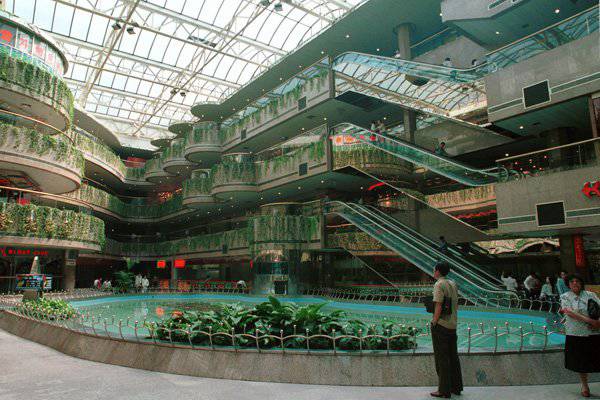
In 1978, civilian products of the Chinese military industrial complex made up no more than 10% of production, over the next five years, this share has doubled. It is significant that Xiaoping, unlike Gorbachev, did not set the task of converting quickly - for all 80-s it was planned to bring the share of civilian products of the Chinese military-industrial complex to 30%, and by the end of the XX century - to 50%.
In 1982, a special Commission on science, technology and industry in the interests of defense was created to reform and manage the military-industrial complex. It was assigned to it the task of converting military production.
Almost immediately, the structure of the defense industry of the PRC underwent radical changes. Previously, the entire military industry of China according to the patterns of the Stalinist USSR was divided into seven strictly secret "number ministries." Now, the “numbered" ministries officially stopped hiding and received civilian names. The Second Ministry of Engineering became the Ministry of Nuclear Industry, the Third - the Ministry aviation Industry, Fourth - by the Ministry of Electronic Industry, Fifth - by the Ministry of Arms and Ammunition, Sixth - by the China State Shipbuilding Corporation, Seventh - by the Ministry of Space Industry (it was responsible for both ballistic missiles and “peaceful” space systems).
All these declassified ministries established their trade and industrial corporations, through which they now had to develop their civilian production and trade in civilian products. Thus, the Seventh Ministry, which became the Ministry of Space Industry, established the Great Wall Corporation. Now it is widely known in the world China Great Wall Industry corporation, one of the largest companies in the production and operation of commercial satellites of the Earth.
In 1986, a special State Commission for the Machine-Building Industry was established in China, which brought together the administration of the civilian Ministry of Machine-Building, which produced all the industrial equipment in the country, and the Ministry of Arms and Ammunition, which produced all the artillery and shells. This was done to improve the management of national engineering. From now on, the entire military industry, which provided numerous Chinese artillery, was subordinated to civilian tasks and civilian production.
Further changes in the structure of the military-industrial complex of the PRC occurred in 1987, when many third-line defense enterprises in mainland China established for nuclear war were closed or relocated closer to transport hubs and major cities, or donated to local authorities to organize civilian production. In total that year, over 180 of large enterprises that were previously part of the system of military ministries were transferred to local authorities. In the same year 1987, several tens of thousands of employees of the Ministry of Atomic Industry of China, previously engaged in uranium mining, were reoriented to gold mining.
However, in the early years, the Chinese conversion developed slowly and without loud achievements. In 1986, the military-industrial complex enterprises of the People's Republic of China exported a little more than 100 civilian products abroad, earning only $ 36 million in that year - a very modest amount even for the still undeveloped Chinese economy.
In the Chinese conversion export, the simplest goods then prevailed. In 1986, the plants subordinate to the PLA Logistics Department exported leather jackets and winter down-coats to the USA, France, the Netherlands, Austria and 20 of the world. The proceeds from such an export by the order of the PLA General Staff were directed towards preparing the conversion of factories that had previously been engaged exclusively in the manufacture of military uniforms for the Chinese army. In order to facilitate the transition to civilian production for these factories, the decision of the PRC government also assigned the task of providing uniforms to all railway workers, flight attendants, customs officers and prosecutors of China - all non-military who, by the nature of service and activity, also wear uniforms.
"Bonuses" from the West and East
The first decade of China’s economic reforms passed under a very favorable foreign policy and foreign economic environment. From the end of 1970-ies to the events on Tiananmen Square, there was a kind of “honeymoon” of communist China and Western countries. The United States and allies sought to use the People's Republic of China, which was openly in conflict with the USSR, as a counterweight to Soviet military power.
Therefore, the Chinese defense industry that started the conversion at that time had the opportunity to cooperate closely enough with the military-industrial corporations of NATO countries and Japan. Back in the middle of 70, China began purchasing computer equipment, communications equipment and radar installations in the United States. Profitable contracts were signed with Lockheed (USA) and Rolls-Royce UK (in particular, licenses were purchased for the production of aircraft engines). In 1977, China purchased samples of helicopters and other equipment from the famous German company Messerschmitt. In the same year in France, China acquired samples of modern rocket technology, and also began to cooperate with Germany in the field of nuclear and rocket research.
In April, 1978, the PRC received the most favorable economic regime in the EEC (European Economic Community, the predecessor of the European Union). Prior to this, only Japan had a similar regime. It was he who allowed Xiaoping to begin the successful development of “special economic zones” (or “special export areas” in the PLA headquarters documents). Thanks to this most favored regime, Chinese factories in military uniforms were able to export their plain leather jackets and down jackets to the United States and Western Europe.
Without this “most favored economic regime” in trade with the richest countries of the world, neither the special economic zones of China nor the conversion of the military-industrial complex of the PRC would have had such success. Thanks to Xiaoping's cunning policy, successfully using the "cold war" and the West's desire to strengthen China against the USSR, Chinese capitalism and conversion at the first stage developed in "greenhouse conditions": with wide open access to money, investments and technologies of the most developed countries of the world.
China’s flirting with the West ended in 1989 after the events on Tiananmen Square, after which the “most favored nation” regime was canceled. But the bloody dispersal of Chinese demonstrators was only a pretext - China’s close contact with NATO countries interrupted the end of the Cold War. With the beginning of the actual capitulation of Gorbachev, China was no longer interested in the United States as a counterbalance to the Soviet Union. On the contrary, the largest Asian country that has begun to flourish has become a potential competitor of the States in the Pacific region.
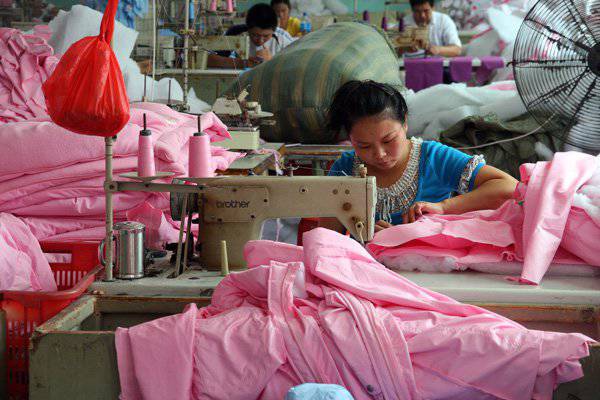
China, in turn, has successfully used the past decade - the flywheel of economic growth has been launched, economic ties and the flow of investments have already gained a “critical mass”. The cooling of political relations with the West to the beginning of 1990-s deprived China of access to new technologies of NATO countries, but could not stop the growth of the Chinese export industry - the world economy could not do without hundreds of millions of cheap Chinese workers.
At the same time, against the backdrop of a cooling with the West, luck from the other side smiled on China: the USSR collapsed, whose relics had been feared for many years in Beijing. The collapse of the once formidable "northern neighbor" not only allowed the PRC to quietly reduce the number of the land army and military spending, but also gave additional, very important bonuses in the economy.
The republics of the former Soviet Union, firstly, became a profitable, almost bottomless market for the still not very high-quality goods of young Chinese capitalism. Secondly, the new post-Soviet states (primarily Russia, Ukraine and Kazakhstan) have become for China an inexpensive and convenient source of both industrial and, above all, military technology. By the beginning of the 1990-s, military technologies of the former USSR were at a completely global level, and although the technologies of civilian industry were inferior to the leading countries of the West, they still exceeded those in the PRC of those years.
The first stage of economic reforms and military conversion in China passed in a very favorable external environment, when the state, which officially called itself Middle, successfully used both East and West for its own purposes.
Brokers in uniform
Due to the favorable situation, the Chinese conversion proceeded simultaneously with the reduction of a large army. Over the decade, from 1984 to 1994 years, the size of the PLA has decreased from about 4 million people to 2,8 million, including thousands of regular officers to 600. Outdated models were removed from service: 10 thousands of artillery barrels, over a thousand tanks, 2,5 thousands of aircraft, 610 ships. The reductions almost did not affect special types and types of troops: airborne units, special forces (Quantou), rapid reaction forces (Quaysu) and missile forces retained their potential.
The large-scale business activity of the PLA has been permitted and developed since the beginning of the 1980-ies as an aid to the national economy. In addition to the conversion of defense enterprises, which gradually switched to civilian production, a specific conversion went directly to military units of the People’s Liberation Army of China.
In the military districts, corps and divisions of the PLA like mushrooms, their own "economic structures" arose, aimed not only at self-sufficiency, but also at capitalist profits. These army “household structures” included agricultural production, production of electronics and household appliances, transportation services, repair services, leisure activities (development of audio-video equipment and even the organization of commercial discos by the army), and banking. An important place was also taken by the import of weapons and dual-use technologies, the trade in surplus and new weapons with third-world countries - the flow of cheap Chinese weapons went to Pakistan, Iran, the DPRK, and the Arab states.
According to Chinese and foreign analysts, the annual volume of China's military business at its peak in terms of scale and results (the second half of 90) reached $ 10 billion annually, and its net annual profit exceeded $ 3 billion. At least half of this commercial the profits were spent on the needs of military construction, on the purchase of modern weapons and technologies. By the same estimates, the PLA’s commercial activities in the 90s annually provided up to 2% of China’s GDP. It is not about the conversion of the military industry, but about the commercial activities of the army of China.
By the middle of 90, the Chinese army controlled almost 20 thousands of commercial enterprises. According to Western experts, up to half of the ground forces, that is, more than a million people, were not actually soldiers and officers, but were engaged in commercial activities, provided transportation, or worked for machine tools in military units, which in essence were ordinary civilian factories. products. In those years, such army factories produced 50% of all cameras, 65% of bicycles and 75% of minibuses produced in China.
By the mid-1990s, the conversion of the actual military industry also reached impressive volumes, for example, almost 70% of the products of the Ministry of Armaments and 80% of products naval shipbuilding enterprises were already civilian. During this period, the PRC government ordered the declassification of 2237 advanced scientific and technical developments of the defense complex for use in the civilian sector. By 1996, enterprises of the Chinese military-industrial complex were actively producing more than 15 thousand types of civilian products, mainly for export.
As the official newspapers of China wrote in those years, when choosing the direction of production of civilian goods, military-industrial enterprises operate according to the principles of “look for rice in order to feed themselves” and “hungry for food is illegible”. The conversion process was not without spontaneity and ill-conceivedness, which led to mass production of low quality products. It is natural that Chinese goods at that time were a symbol of cheap, mass and low-quality production.
According to the Institute of Industrial Economics of the Academy of Social Sciences of China, by 1996, the country managed to transform the military-industrial complex from a manufacturer of only military equipment into a manufacturer of both military and civilian products. Despite all the vicissitudes of the reforms and a rather “wild” market by the end of 1990, the Chinese military industrial complex consisted of more than two thousand enterprises, which employed about three million people, and 200 research institutes, where 300 thousands of scientists worked.
By the end of the twentieth century, China in the course of market reforms has accumulated sufficient industrial and financial potential. The active economic activity of the PRC Army has already clearly hampered the growth of its combat capability, and the funds accumulated by the country have already made it possible to abandon the commercial activities of the armed forces.
Therefore, in July 1998, the CPC Central Committee decided to discontinue all forms of PLA commercial activity. For two decades of reform, the Chinese army has created a huge entrepreneurial empire, whose activities stretched from the transport of commercial goods by military vessels and aircraft to show business and securities trading. The involvement of the military in smuggling operations, including the import of oil, the sale of duty-free cars and cigarettes, uncontrolled to state structures, was no secret to anyone. The number of army trade and industrial enterprises in China reached several tens of thousands.
The reason for the ban on army commerce was the scandal associated with the J&A, the largest brokerage company in the south of the country, created by the PLA. Its leadership was arrested on suspicion of financial fraud and convoyed to Beijing. Following this, a decision was made to end free military entrepreneurship.
"Great Wall of China" military corporations
Therefore, a large-scale reorganization of the PLA and the entire Military-Industrial Complex began in the People's Republic of China with 1998. To begin with, legislation on military industry was declassified and revised over 100 and a new system of military legislation was created. The new law of the People's Republic of China “On State Defense” was adopted, the Committee of Defense Science, Technology and Industry was reorganized, a new structure of the Chinese military industrial complex was established.
There were 11 market-oriented large associations of the Chinese military industry:
Nuclear industry corporation;
Nuclear Industry Corporation;
First Aviation Industry Corporation;
Second Aviation Industry Corporation;
Northern Industrial Corporation;
South Industrial Corporation;
Shipbuilding industry corporation;
Heavy Shipbuilding Corporation;
Aerospace Science and Technology Corporation;
Aerospace Science and Industry Corporation;
E-science and technology corporation.
In the first five years of their existence, these corporations made a great contribution to the modernization of the defense and development of the national economy of China. If in 1998, the defense industry was one of the most unprofitable industries, in 2002, the Chinese military-industrial corporations became profitable for the first time. Since 2004, 39’s military-industrial enterprises have already been listed on Chinese stock exchanges.
The military-industrial complex of China began to confidently conquer civilian markets. So, in 2002, the military-industrial complex, in particular, accounted for 23% of the total volume of cars produced in the PRC - thousands of cars 753. The enterprises of the defense industry of China also massively produced civilian satellites, airplanes, ships and reactors for nuclear power plants. The share of civilian goods in the gross output of the defense enterprises of China at the beginning of the XXI century reached 80%.
What constitutes a typical military-industrial corporation of the People's Republic of China can be seen on the example of the North Industrial Corporation (China North Industries Corporation, NORINCO). It is the country's largest association for the production of weapons and military equipment and is under the direct control of the State Council of China, employs more than 450 thousands of employees, includes more than 120 research institutes, manufacturing enterprises and trading companies. The corporation develops and manufactures a wide range of high-tech weapons and military equipment (for example, rocket and anti-missile systems), and at the same time produces a variety of civilian products.
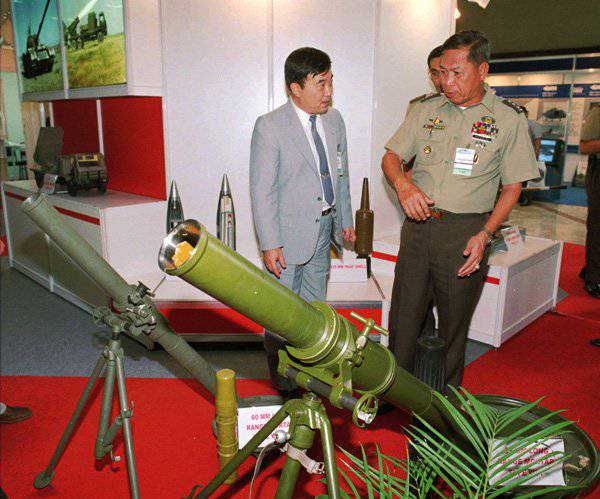
If in the military sphere, the Northern Corporation manufactures weapons from the simplest Type 54 pistol (a clone of the pre-war Soviet TT) to multiple rocket launchers and anti-missile systems, in the civilian sphere it produces goods from heavy trucks to optical electronics.
For example, under the control of the Northern Corporation, several well-known truck brands in Asia are manufactured and one of the most significant and large factories Beifang Benchi Heavy-Duty Truck is operating. At the end of the 80s, this was a key project for the PRC, whose main goal was to solve the problem of a shortage of heavy trucks in the country. Thanks to the “most favored nation conditions” that existed in those years in trade with the EEC, “Beifan Benci” cars (translated from Russian as “North Benz”), these cars are manufactured using Mercedes Benz technology. And now the company's products are actively exported to Arab countries, Pakistan, Iran, Nigeria, Bolivia, Turkmenistan, Kazakhstan.
At the same time, the same “Northern Corporation” is not without reason suspected by the United States of military cooperation with Iran in the field of developing missile weapons. In the process of investigating these relations of the Chinese corporation with Ayatollahs of Tehran, the US authorities discovered eight Norinco subsidiaries on its territory that were engaged in high-tech activities.
Without exception, all the military-industrial corporations of the PRC work in the civilian sphere. So the nuclear industry of China, which previously produced mainly military products, follows the policy of "using the atom in all spheres of economic activity." Among the main activities of the industry are the construction of nuclear power plants, the extensive development of isotope technology. To date, the industry has completed the formation of a research and production complex that allows to design and build nuclear power units with a capacity of 300 thousand kilowatts and 600 thousand kilowatts, and in cooperation with foreign countries (Canada, Russia, France, Japan) - with nuclear power units of 1 million kilowatt.
In the space industry of China, an extensive system of scientific research, development, testing and production of space technology has been formed, allowing launching satellites of various types, as well as manned spacecraft. To ensure their implementation, a telemetry and control system has been deployed, including ground stations in the country and seagoing vessels operating in the entire World Ocean. The Chinese space industry, not forgetting its military purpose, manufactures high-tech products for the civilian sector, in particular, program-controlled machines and robotics.
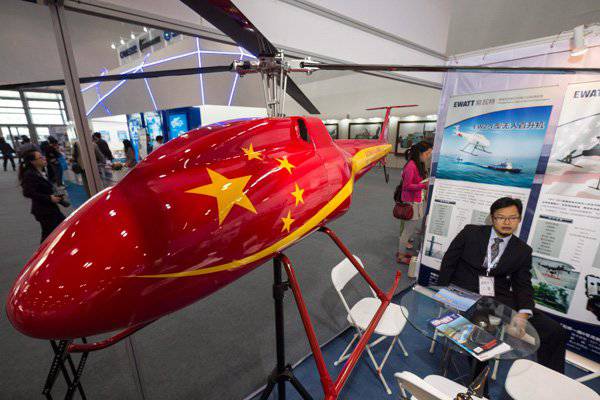
Borrowing and industrial development of foreign experience in aircraft industry allowed China to take a strong position in the foreign market as a supplier of aircraft parts and assemblies in most developed countries. For example, the First Aviation Industry Corporation (number of employees over 400 thousand) signed an agreement with Airbus in the production of spare parts for the world's largest serial airliner, Airbus A2004, back in 380. In Russia, the representative office of this corporation, since 2010, has been actively promoting its heavy-duty mining excavators on our market.
Thus, China’s defense industry has become a base for civil aviation, automotive and other civilian industries in the PRC. At the same time, the conversion military industrial complex of China not only contributed to the rapid development of the Chinese economy, but also itself substantially increased its technical level. If 30 years ago, China had the most developed military-industrial complex among the “third world” countries, lagging far behind NATO and the USSR in advanced development, then at the beginning of the 21st century, due to well-thought-out conversion and skillful use of favorable external circumstances, China’s defense industry confidently catches up with the top five. the best military-industrial complexes of our planet.
Information